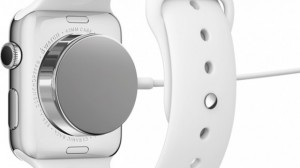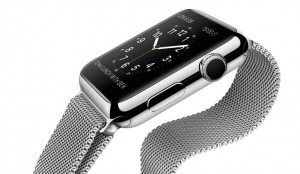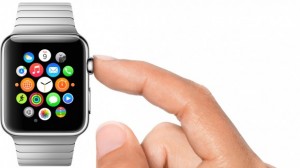It looks as if we will finally get a chance to put an Apple Watch on our wrists by early spring next year. A report out of Taiwan says that Apple and its supply partner Quanta Computer have “solved their yield issues” regarding various Apple Watch components, and that the device is gearing up to enter mass production in January. This would likely mean that the Apple Watch would hit the shelves by March 2015, as alluded to earlier in internal Apple communications.
Now that the release date has been getting firmer and firmer, we are left to speculate exactly which issues have been resolved for the long-awaited wearable. We know that there were problems securing enough raw materials to facilitate the high-end sapphire touchscreens, so we assume that is one major issue that has been fixed.
Apple Watch Battery Life Remains a Major Question Mark
 What about the battery life? From the day back in September that Apple announced that the Apple Watch was coming, questions about the device’s battery life have formed the biggest mystery about this product. All of Apple’s statements about Apple Watch battery have coyly avoided any details about specs or the length of the battery charge.
What about the battery life? From the day back in September that Apple announced that the Apple Watch was coming, questions about the device’s battery life have formed the biggest mystery about this product. All of Apple’s statements about Apple Watch battery have coyly avoided any details about specs or the length of the battery charge.
Most smartwatches that are already on the market, like Pebble and MetaWatch, last up to a week on a single charge. But several leaks out of Apple suggest that the Apple Watch will only last one day on a single charge. Furthermore, Apple has a history of problematic batteries for portable devices, dating back to the iPod. When the batteries on those devices went kaput due to constant use, Apple did not have a mechanism to replace them.
We don’t know for sure, but the Apple Watch also appears to have a sealed back, which would mean the battery can’t be replaced. Will consumers need to fork over $350 for a new device every time the Apple Watch battery craps out? We sure as hell hope not.
Function vs. Style
 Concerns about the battery aside, there are still various features of the Apple Watch that are unique and representative of real breakthroughs in smartwatch design. The Digital Crown is a knob on the side of the device which allows the user to scroll through screens of functions or any other data on the tiny screen without obstructing your view. The Apple Watch’s Force Touch feature can interpret different levels of force on the touch screen in order to perform different functions.
Concerns about the battery aside, there are still various features of the Apple Watch that are unique and representative of real breakthroughs in smartwatch design. The Digital Crown is a knob on the side of the device which allows the user to scroll through screens of functions or any other data on the tiny screen without obstructing your view. The Apple Watch’s Force Touch feature can interpret different levels of force on the touch screen in order to perform different functions.
There are lots of other functions of the Apple Watch that we can’t wait to try out. But does the fact that the Apple Watch is the first Apple product that is actually worn like clothing change the marketing equation? It appears that it does indeed. Apple is not hiding the concept that the Apple Watch is not just a technology device, but also a personalized piece of jewelry that the fashion world will be proud to embrace.
A report has surfaced indicating that Apple is recruiting retail candidates with “a fashion or luxury background”, suggesting that Apple is preparing to make some changes to its retail operations before the Apple Watch launch next March. There is no question that the company is looking to market the Apple Watch as a lifestyle product.
Apple Watch Will Bring A Change To Apple Stores
 For one thing, the Apple Watch comes in three basic models, but it also comes with a truly impressive array of watch bands, offering far more style choices than any other smartwatch. Apple thinks this style personalization will be as important as the device’s functionality when it comes to consumer appeal.
For one thing, the Apple Watch comes in three basic models, but it also comes with a truly impressive array of watch bands, offering far more style choices than any other smartwatch. Apple thinks this style personalization will be as important as the device’s functionality when it comes to consumer appeal.
Back in October, Apple SVP of design Jony Ive talked about the need for various appearances of the Apple Watch. Ive said that “as soon as something is worn, we have expectations of choice. Only in prison do people all wear the same thing”.
So, it looks as if Apple Stores will be transformed once the Apple Watch hits the market. The Apple Watch section will need to be big enough to hold many of the various combinations of watch and watchband, and retail staff will need to allow consumers to try the devices on, preen in a mirror, and so on. The only thing missing will be changing rooms.
We can hear it now: “Does this watch make me look fat honey?”
